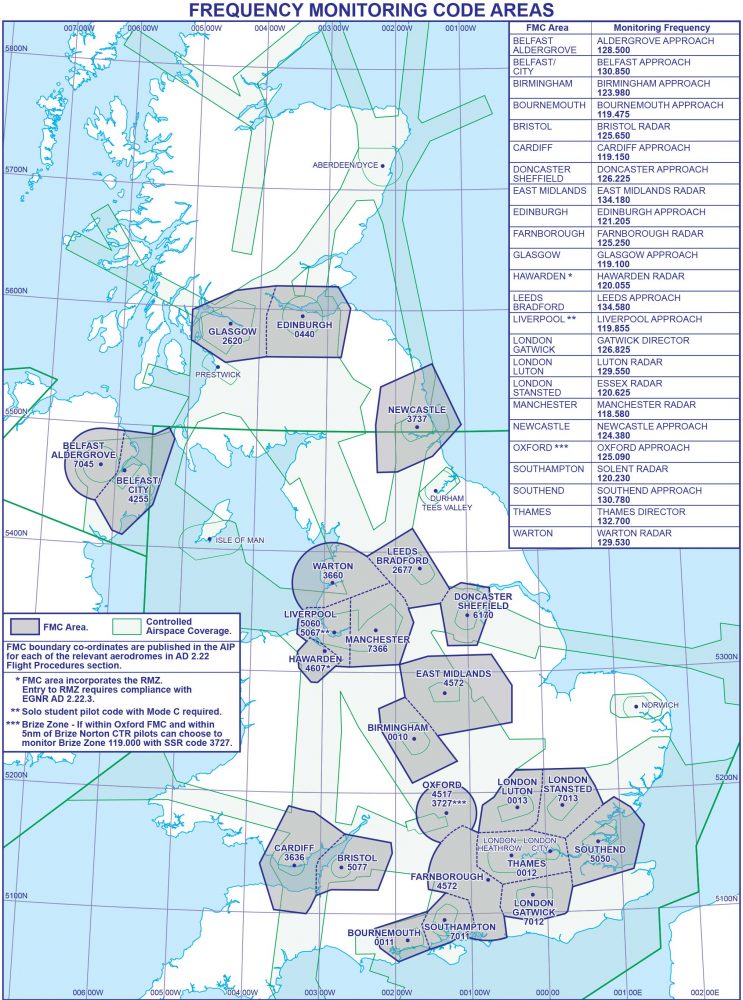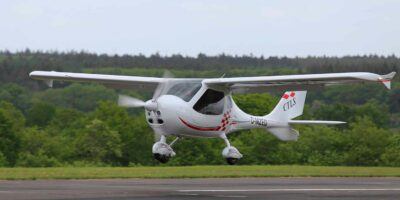An update to the Listening Squawks and Frequency Monitoring Codes has been issued by the CAA. New cards can be downloaded as pdfs and printed out or used electronically (see links below).
Why use a Listening Squawk?
If you are operating close to controlled airspace and not requiring an Air Traffic Control (ATC) service you are always encouraged to monitor the relevant ATC frequency.
Rather than squawking 7000, you are encouraged to select a local Frequency Monitoring Code (FMC) or Listening Squawk of the nearest appropriate ATC unit. You should already have Mode C selected, to indicate that you are monitoring (listening to) that unit’s frequency.
Use of an FMC helps in preventing and mitigating the consequences of airspace infringements for both the pilot and ATC.
They allow the appropriate ATC unit to be aware of aircraft that are on their frequency. This makes it easy and quick to contact the pilot of any aircraft that may be infringing (or are likely to infringe) controlled airspace.
This can help ATC to rapidly resolve an actual or potential infringement efficiently and before it becomes a more serious incident.
How it works
- Tune in to the radar controller’s radio frequency BEFORE selecting a listening squawk (otherwise you won’t be listening)
- Select the listening squawk, using ALT (Mode C) if you have it
- Listen out for any transmissions with your callsign or position. If both the aircraft and ATC unit are equipped with Mode S, the pilot will be issued a warning based on the aircraft’s registration/callsign. If neither the ATC unit nor the aircraft are equipped with Mode S, the pilot will be issued with a warning based on the aircraft’s position.
Will I always be warned if I’m about to enter Controlled Airspace (CAS)?
Subject to workload, ATC will often endeavour to provide a timely warning. But there can be no guarantee that pilots will always be warned. Pilots remain responsible for their own navigation and in particular to only enter controlled airspace after obtaining a clearance to do so.
Use of an FMC/Listening Squawk
- May provide an early indication of navigational error and prevent an inadvertent entry of CAS without a clearance
- Will enable ATC to resolve an infringement quickly and efficiently
- Is good airmanship.
It also means that should a pilot suffer an in-flight emergency that might need help from ATC, an appropriate local frequency is already selected on the radio, perhaps saving precious time in a difficult and stressful situation.
No transponder?
Pilots of non-transponder equipped aircraft are also encouraged to monitor the relevant ATC frequency. If a non-squawking aircraft is infringing or about to infringe, ATC will attempt to resolve the situation by making a ‘blind transmission’ with the aim of establishing two-way contact with the pilot.
Downloads
Frequency Monitoring Code area map
Listening Squawks (correct April 2019)













2 comments
Tune in to the radar controller’s radio frequency BEFORE selecting a listening squawk (otherwise you won’t be listening)
Sorry but I don’t understand the last part in brackets, why would I not be listening?
Because you won’t be on frequency yet.